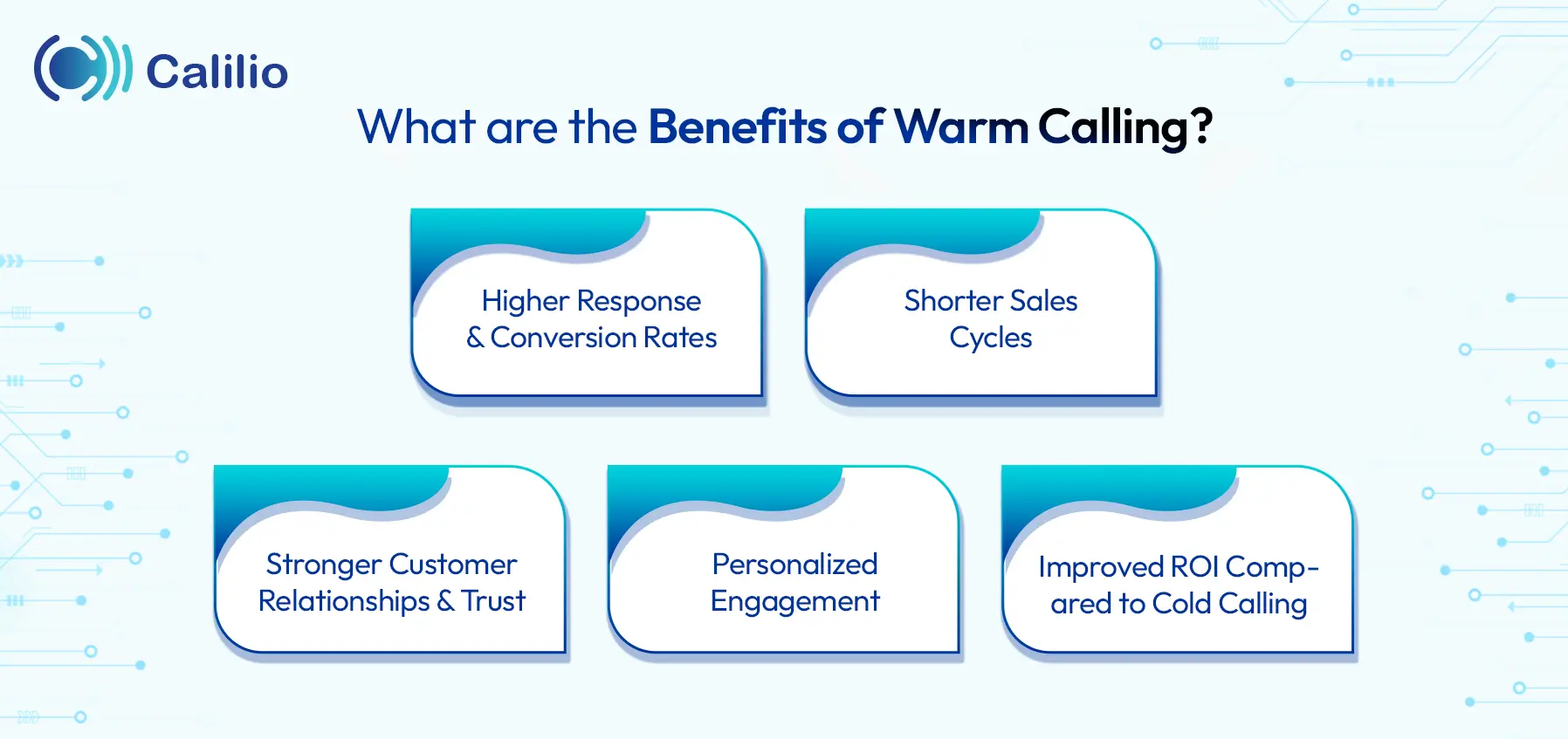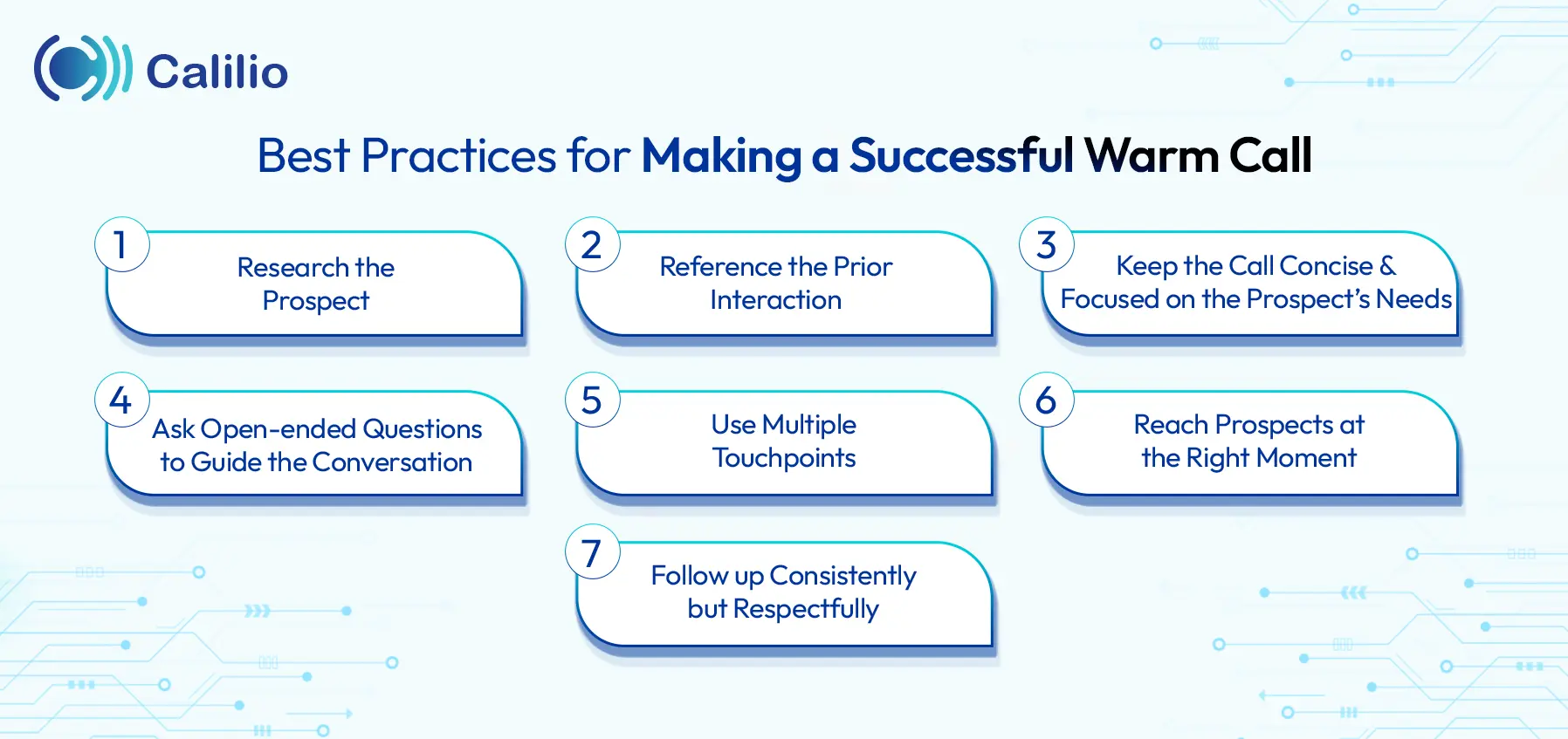What is Warm Calling & Why It’s Key to Better Sales

Cold calling has been a long-standing sales tactic, but it often delivers disappointing results. Many prospects don’t respond, leaving sales agents frustrated and wasting valuable time.
To overcome these challenges, businesses are shifting toward warm calling—a more strategic and personalized approach that targets prospects who have already shown interest in the brand. Instead of reaching out to random contacts, sales reps connect with individuals familiar with the company, leading to more productive conversations, stronger engagement, and higher conversion rates.
In this article, we’ll explain what warm calling is, how it works, and why it matters for modern sales teams. You’ll also learn about its challenges and proven tips to make your warm calls more effective.
Key Highlights:
Warm calling targets prospects who have previously interacted with your brand, unlike cold calling, which reaches out blindly.
Warm calls lead to higher engagement, better conversion rates, and more personalized sales conversations.
A typical warm call includes referencing prior interactions, asking open-ended questions, and offering tailored solutions.
Some common challenges of warm calling include timing, resistance, consistency, and the need for personalized research.
For effective warm calling, you must research the prospect prior to identifying their needs.
What is Warm Calling?
Warm calling is a type of sales call where an agent reaches out to prospects or sales leads who already have some prior contact with the company, product, or the salesperson through different media such as a website, social media, marketing campaign, or coming from a referral. Unlike cold calling, warm calling happens only after a prospect has already interacted with your company.
There are higher chances of conversion in warm calling, as the prospect would have already shown interest in the product previously.
Example of a Warm Call Script
“Hi [Prospect’s Name], this is [Your Name] from [Your Company]. We connected recently when you [downloaded our guide / attended our event / spoke with us]. I just wanted to follow up and see if you had any questions. Would you be open to a quick chat about how [Your Product/Service] might help with [specific need]?”
How Does Warm Calling Work?
Warm calling begins by identifying prospects who have already engaged with the business. Then, the sales team pre-qualifies these warm leads to ensure they fit the target profile. From there, reps prepare, make the call to the prospect, focusing on building rapport, asking questions, and presenting solutions tailored to the prospect’s needs.
- Identify warm leads: Prospects come from website visits, downloads, referrals, events, or previous interactions with the company. The call center agents research and find the potential customers who have already interacted with the business in some way.
- Pre-qualify the leads: The sales team reviews each prospect to confirm they fit the target profile. They filter out unlikely buyers and prevent wasted effort.
- Prepare for the call: Reps review available information about the potential lead so they can personalize the conversation before the warm call.
- Make the call: Using an automated dialer such as Power Dialer or manual dialing, the rep reaches out to the prospect.
- Build rapport and ask questions: The rep focuses on creating a natural conversation, uncovering needs, and listening carefully.
- Present the solution: After understanding the prospect’s needs, an agent offers the product or service as the solution.
- Follow up: If the timing isn’t right for a purchase, the rep continues the relationship with follow-up calls or emails.
What are the Benefits of Warm Calling?
Warm calling is crucial for businesses as it delivers higher response and conversion rates. Since the prospects already know the company, sales cycles move faster, trust builds more easily, and conversations feel more personalized. It reduces wasted effort on calls and improves ROI.

1. Higher Response and Conversion Rates
As the prospects already know the company, they’re more likely to answer the call and engage. This leads to a higher call answering rate, potential conversion rates and makes better use of a sales rep’s time compared to cold calls.
2. Shorter Sales Cycles
Warm calls often move faster because the prospect has already shown interest. Instead of starting from scratch, the agents can focus on conversion rather than wasting time on introducing the product or persuading customers.
3. Stronger Customer Relationships and Trust
Reps make the prospects feel recognized by referencing a customer’s prior interaction, which makes the call more genuine and builds trust from the start. As a result, trust develops more quickly, positive rapport comes naturally, and the foundation for a long-term customer relationship is established.
4. Personalized Engagement
These calls allow sales reps to personalize their approach using details like past downloads, event attendance, or referrals. Before reaching out, agents research the prospect to understand their needs and preferences. This preparation makes the conversation more relevant and persuasive.
5. Improved ROI Compared to Cold Calling
Since warm calls are more targeted and efficient, they deliver a higher return on investment. Reps spend less time chasing uninterested leads and more time on prospects likely to convert, which lowers acquisition costs and boosts revenue.
Key Challenges of Warm Calling
The key challenges of warm calling include reaching prospects at the right time, keeping them engaged, and turning conversations into opportunities. When comparing warm calling and cold calling, warm calling may sound easier, but it still comes with hurdles that can affect results.
Timing Issues
Even with prior contact, understanding when prospects are available and willing to talk can be difficult. Poor timing often leads to unanswered calls or rushed conversations.
Overcoming Resistance
Some prospects may hesitate to move forward despite familiarity with your brand. You need to build trust and address objections effectively.
Maintaining Consistency
Warm calling requires steady follow-ups to stay top of mind. Without consistency, warm leads may go cold quickly.
Balancing Personalization
Personalizing calls is important, but it’s also time-consuming. Striking the right balance between efficiency and tailored communication can be challenging.
Best Practices for Making a Successful Warm Call
To make a successful warm call, research the prospect beforehand, reference any prior interactions, and focus the conversation on their specific needs. Keep the call concise, ask open-ended questions to spark dialogue, and follow up consistently to build the relationship.

- Research the Prospect: Start by researching the prospect. Take time to understand their needs so that your call feels informed and relevant.
- Reference the Prior Interaction: When you make the call, reference the prior interaction right away. Reps need to mention a specific touchpoint, such as a guide they downloaded, an event they attended, or a referral, to help establish context and make the conversation more personalized and natural.
- Keep the Call Concise and Focused on the Prospect’s Needs: Instead of leading with a long pitch, guide the discussion toward their challenges and how you might be able to help.
- Ask Open-ended Questions to Guide the Conversation: Agents need to ask open-ended questions to encourage interactions and more meaningful answers from the prospect. It allows the prospect to share more about their situation and gives you the opportunity to understand them better.
- Use Multiple Touchpoints: Businesses should use multiple touchpoints to connect with the prospect. You must try different digital channels such as emails, calls, voicemails, or social media, creating several opportunities for engagement. Moreover, use a good telephony platform for reliable connectivity and better interaction with prospects.
- Reach Prospects at the Right Moment: The timing of a sales call matters just as much as the message. Since Mondays are too busy, and Fridays are less productive, the best time to make warm calls is usually late mornings (11 AM–12 PM) and late afternoons (4 PM–5 PM), when prospects are more available and receptive.
- Follow up Consistently but Respectfully: Finally, call centers should follow up consistently with a callback for those who have requested it. You can leave a personalized voicemail when someone doesn’t pick up the call. A steady rhythm of contact keeps the conversation moving forward, while thoughtful timing shows that you value the prospect’s time.
How Warm Calling is Different from Hot Calling?
Warm calling involves reaching out to prospects who have had some prior interaction or awareness of your brand, while hot calling targets leads who are highly interested and ready to buy. Warm calls focus on nurturing interest, whereas hot calls focus on closing the deal.
Aspect | Warm Calling | Hot Calling |
Lead Awareness | Prospect knows your brand but isn’t ready to buy yet | Prospect is highly interested and sales-ready |
Objective | Build trust and nurture a relationship | Convert immediately into a sale |
Effort Needed | Requires research, personalization, and follow-ups | Requires urgency and strong closing skills |
Conversion Likelihood | Moderate | High |
Conclusion
Warm calling offers companies a smarter, more trustworthy way to invest their sales time. As the customer is already interested in your product, you can tailor the call to focus on their real needs. It not only helps to close more deals but also helps to build relationships that drive repeat business and referrals.
A business phone system like Calilio makes warm calling smoother and more efficient. It offers telephony features such as a Power Dialer to save time and reach more prospects efficiently, call whispering to guide agents during live conversations without the prospect hearing, and call recording to review and improve sales performance. Additionally, it includes powerful telephony features like voicemail transcription, call monitoring, call forwarding, and more to further enhance call management.
Frequently Asked Questions
What is an example of warm calling?
An example of warm calling is when a sales rep calls someone who downloaded a guide from the company’s website. Since the prospect has already engaged with the business, the call feels more relevant and less intrusive.
What is a warm call job description?

Still have questions?
Can’t find the answer you’re looking for? Please chat with our friendly team.
Stay in the loop
Get the latest call insights, trends, and updates delivered straight to your inbox.
By subscribing, you agree to receive updates from Calilio.
You can unsubscribe anytime.
Phone numbers
Get International Phone Numbers
Singapore
|Australia
|New Zealand

